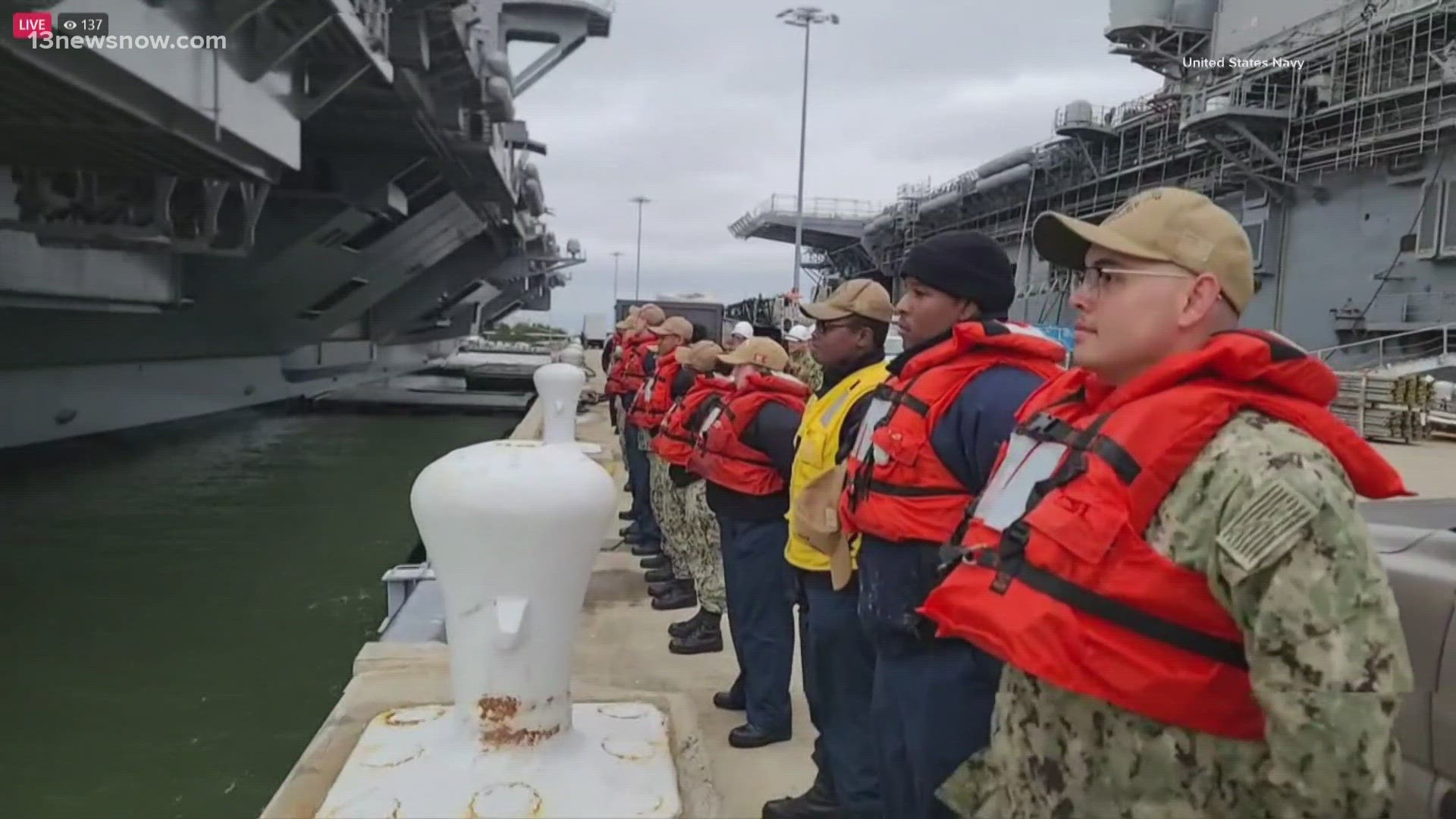NORFOLK, Va. — The Norfolk-based Gerald R. Ford Carrier Strike Group's (CSG) deployment has been extended after its redirection to the eastern Mediterranean amid the Israel-Hamas conflict.
In a news release on Tuesday, the Pentagon announced Secretary of Defense Lloyd Austin approved the strike group's extended stay in the U.S. Naval Forces Europe-Africa/Sixth Fleet Area of Operation.
Officials did not release a timeline for the extension.
The strike group first set sail in May for a six-month deployment in the U.S. European Command area that was expected to end in early November. The USS Gerald R. Ford was ordered to the Eastern Mediterranean shortly after Israel declared war on Hamas.
To ensure the Department of Defense can respond quickly, Austin also placed about 2,000 personnel and various units on a "heightened state of readiness through a prepare to deploy order."
This announcement comes just three days after Austin directed another Norfolk-based carrier strike group, the USS Dwight D. Eisenhower, to the Eastern Mediterranean to help "deter hostile actions against Israel or any efforts toward widening this war following Hamas's attack on Israel."
That aircraft carrier was initially scheduled to depart Friday morning alongside the rest of the strike group but was unexpectedly delayed until Saturday morning. The U.S. Navy did not share an exact reason for the delay but said in a release that it was "to ensure the ship is in peak readiness when she joins the units from the strike group."
The Eisenhower CSG was already scheduled to deploy prior to Hamas' attacks on Israel, although Navy officials did not share where the fleet was originally supposed to be stationed.
The U.S. also sent the cruiser USS Normandy, destroyers USS Thomas Hudner, USS Ramage, USS Carney, and USS Roosevelt and the U.S. is augmenting Air Force F-35, F-15, F-16, and A-10 fighter aircraft squadrons to the region.

